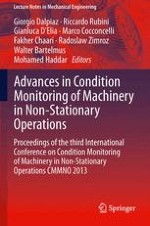This book presents the processing of the third edition of the Condition Monitoring of Machinery in Non-Stationary Operations (CMMNO13), which was held in Ferrara, Italy. This yearly event merges an international community of researchers who met – in 2011 in Wroclaw (Poland) and in 2012 in Hammamet (Tunisia) – to discuss issues of diagnostics of rotating machines operating in complex motion and/or load conditions. The growing interest of the industrial world on the topics covered by the CMMNO13 involves the fields of packaging, automotive, agricultural, mining, processing and wind machines in addition to that of the systems for data acquisition. The participation of speakers and visitors from industry makes the event an opportunity for immediate assessment of the potential applications of advanced methodologies for the signal analysis. Signals acquired from machines often contain contributions from several different components as well as noise. Therefore, the major challenge of condition monitoring is to point out the signal content that is related to the state of the monitored component particularly in non-stationary conditions.
